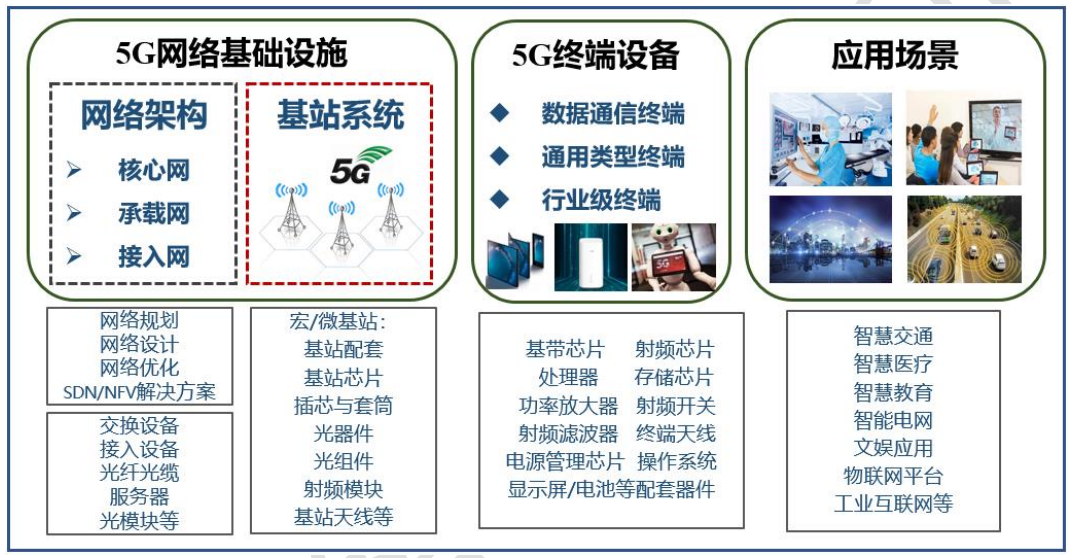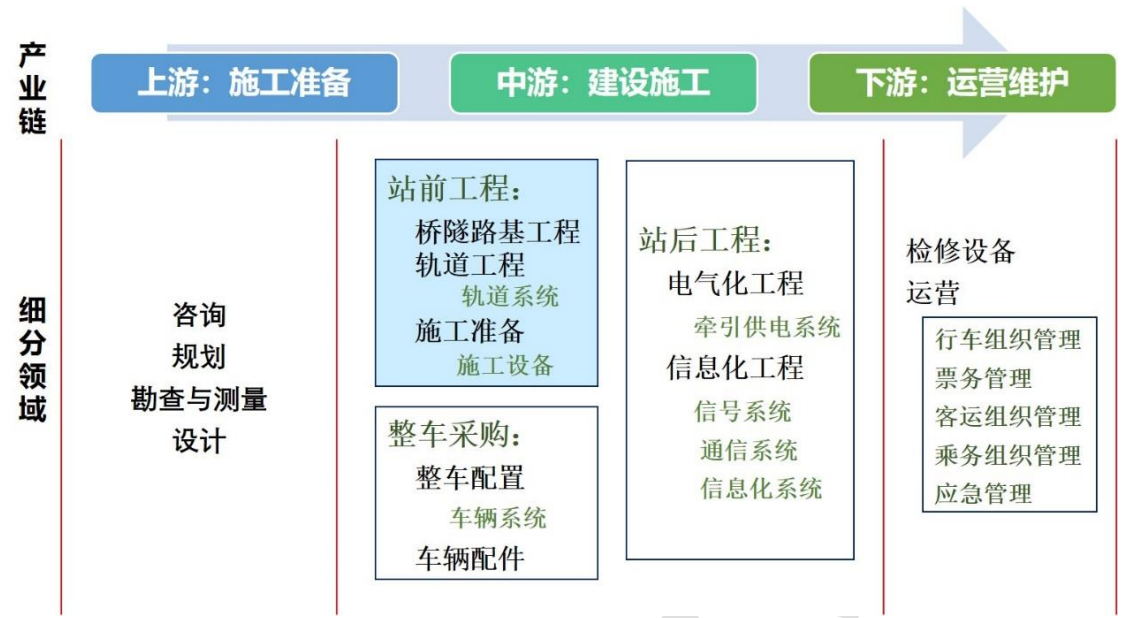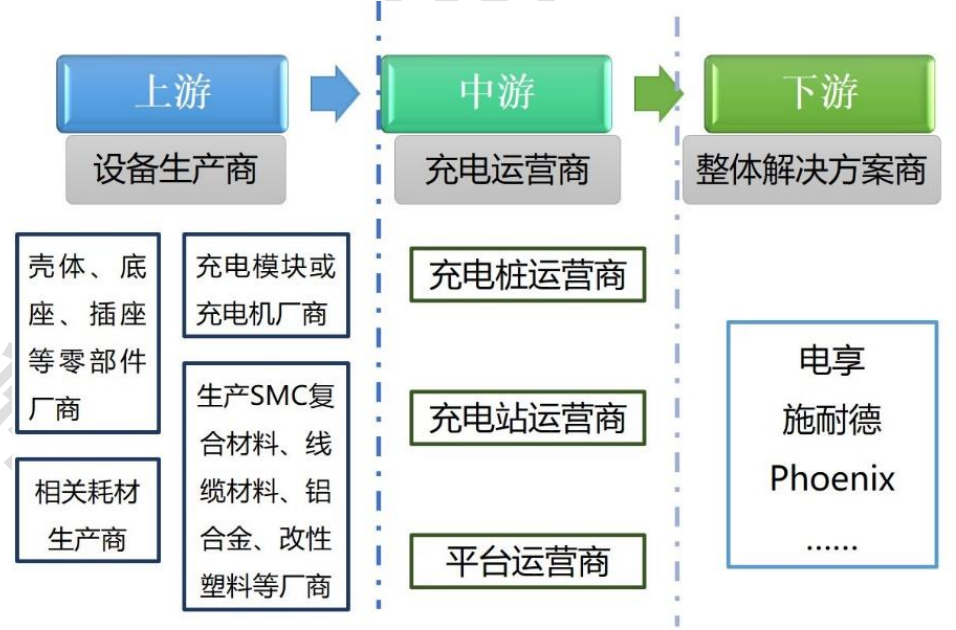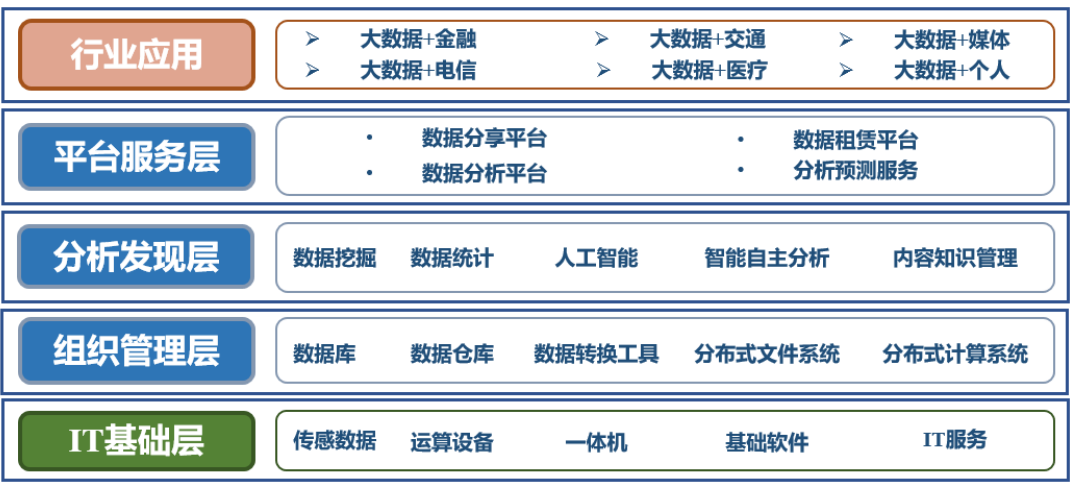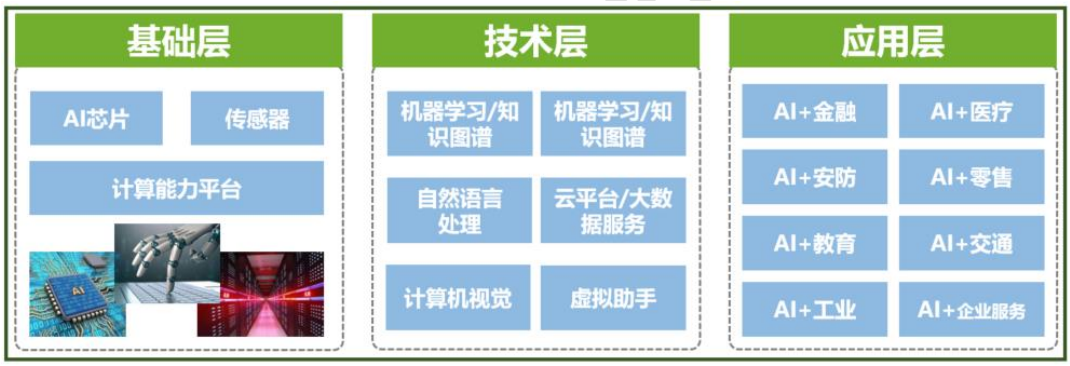All translations on this site are unofficial and provided for reference purpose only.
To view translations, select English under Step 1 (at the right of the screen). Not every item is (fully) translated. If you’re still seeing Chinese, you can use machine translation, under Step 2, to make sense of the rest.
Want to help translate? Switch to English under Step 1, and check ‘edit translation’ (more explanation in the FAQ). Even if you translate just a few lines, this is still very much appreciated! Remember to log in if you would like to be credited for your effort. If you’re unsure where to start translating, please see the list of Most wanted translations.
White paper on the development of “New Infrastructure Construction”
Original title: 《“新基建”发展白皮书》
Links: Source document (in Chinese) (link).
White paper on the development of “New Infrastructure Construction”
Research institute for Information Technology of the CCID Think Tank
March 2020
Foreword
“新基建”是服务于国家长远发展和“两个强国”建设战略需求,以技术、产业驱动,具备集约高效、经济适用、智能绿色、安全可靠特征的一系列现代化基础设施体系的总称。近年来,党中央、国务院高度重视新型基础设施建设,不断加快并完善5G基建、特高压、城际高速铁路和城市轨道交通、新能源汽车充电桩、大数据中心、人工智能、工业互联网等领域的建设布局。以“新基建”为牵引,夯实经济社会高质量发展的“底座”“基石”,对于引燃“十四五”产业动力新引擎、助力数字经济发展、构建智慧和谐社会具有重要意义。
Under this situation, the Institute of Electronic Information of CCID Think Tank has compiled the industry's first "New Infrastructure Development White Paper", combing and expounding in detail the connotation, significance, construction content and driving effect of the new infrastructure, and predicting the new round of investment trends , Analyzed and put forward the path principles to be followed in the process of "new infrastructure" promotion on investment subjects, regional layout, network security, etc., and put forward several measures and suggestions from the perspective of the government and enterprises for decision-making reference。
本白皮书由赛迪研究院电子信息研究所温晓君、陆峰、张金颖、苏廷栋、李雅琪、石岩、张甜甜、王丽丽参与编写,如有商榷之处,欢迎大家批评指正。
赛迪研究院电子信息研究所
2020年3月19日
Table of contents
一、“新基建”的概念内涵
二、“新基建”与“传统基建”的区别
(一)更突出支撑产业升级和鼓励应用先试
(二)更突出政府对全环节的软治理
(三)更突出区域生产要素整合和协调发展
三、“新基建”实施的意义
(一)支撑网络强国建设
(二)助力数字经济发展
(三)加速构建智慧社会
四、“新基建”建设内容
五、“新基建”的带动效应
六、“新基建”引入的投资新风口
(一)加快芯片产业化
(二)补足工业软件短板
(三)推进系统装备规模化生产
(四)促进行业应用落地
七、需着重关注的四点问题
(一)投资主体
(二)实施进度
(三)区域和行业布局
(四)网络安全保障
八、区域布局需考虑的因素
(一)国家战略和重大项目布局要求
(二)人口分布和城镇化格局现状
(三)地区产业和互联网发展情况
(四)区域资源环境承载能力
九、措施建议
(一)政府层面
(二)企业层面
一、“新基建”的概念内涵
“新基建”是与传统的“铁公基”相对应,结合新一轮科技革命和产业变革特征,面向国家战略需求,为经济社会的创新、协调、绿色、开放、共享发展提供底层支撑的具有乘数效应的战略性、网络型基础设施。“新基建”包括5G基建、特高压、城际高速铁路和城市轨道交通、新能源汽车充电桩、大数据中心、人工智能、工业互联网等七大领域。
Table 1. Timeline of the development of the concept of "New Infrastructure"
| Time | Meeting | Content |
| December 2018 | Central Economic Work Conference | Accelerate the growth of commercial use of 5G, increase construction of New Infrastructure, such as artificial intelligence, Industrial Internet of Things, Internet of Things, etc., increase investment in intercity transportation, logistics, municipal infrastructure, etc., and address the shortcomings of rural infrastructure and public service facilities construction |
| March 2019 | Government work report from the National Two Meetings | Increase investment in infrastructure such as intercity transport, logistics, municipal government, disaster prevention, civil and general aviation, and strengthen the construction of a new generation of information technology infrastructure |
| December 2019 | Central Economic Work Conference | Focusing on the long-term development of the country, strengthen the construction of strategic, networked infrastructure, promote the construction of the Sichuan-Tibet Railway and other major projects, steadily promote the construction of communication networks, accelerate the implementation of major projects for natural disaster prevention and control, strengthen the construction of municipal pipeline networks, urban parking lots, cold chain logistics, etc., and accelerate the construction of rural roads, information technology, water conservancy and other infrastrtucture |
| January 3, 2020 | State Council executive meeting | Vigorously develop advanced manufacturing, introduce new support policies for infrastructure investment such as for information technology networks, and promote smart and green manufacturing |
| February 14, 2020 | Twelfth meeting of the Central Committee for Comprehensive Deepening of Reform | Coordinate the development of existing and additional, traditional and New infrastructure, and create a modern infrastructure system that is intensively used and efficient, economical, convenient, intelligent, green, safe, and reliable |
| February 21, 2020 | Politburo meeting | Increase R&D support for reagents, medicines and vaccines, and promote the accelerated development of biomedicine, medical equipment, 5G networks, Industrial Internet of Things, etc. |
| March 4, 2020 | Politburo Standing Committee Meeting | Accelerate the construction of New Infrastructure such as 5G networks and data centers。 |
Data source:Prepared by CCID Think tank, March 2020
二、“新基建”与“传统基建”的区别
“新基建”与“传统基建”区别体现在三个方面。
(一)更突出支撑产业升级和鼓励应用先试
“新基建”以产业作为赋能对象,通过数字化智能化改造,促进产业的数据驱动发展,并在超高清、智能制造、智能网联汽车、新能源汽车等前沿产业领域,完善应用环境,抢占产业发展先机。
(二)更突出政府对全环节的软治理
“新基建”需要加强政府对规划、建设、运营、监管的全环节治理水平,增强投资动员能力,提升资金运用精准性,加强政策配套保障,实现舆情及时响应和监管开放透明,在实践中不断优化治理水平。
(三)更突出区域生产要素整合和协调发展
“新基建”提升覆盖范围内数据资源、电力能源、人才的流动速度和参与程度,削弱了传统要素有限对经济增长的制约,推动技术、劳动等其他生产要素的数字化发展,不仅促进中心城市的产业创新,还有助于中小城市、农村地区的协调发展。
三、“新基建”实施的意义
(一)支撑“两个强国”建设
提供高速泛在的连接能力。5G以及工业互联网等新型基础设施建设全面强化数据连接能力;高铁、轨道交通、特高压、新能源汽车充电桩等新型基础设施建设进一步补足经济社会能源连接。提供通用化平台型支撑服务。通用人工智能平台以及大数据中心建设为我国制造业转型升级提供需求载体与核心驱动力。打造安全可控的基础网络体系。以新型基础设施建设为抓手,补足信息技术短板,强化关键核心技术与产品的自研能力,对于我国抢抓新一轮产业变革机遇意义重大。
(二)助力数字经济发展
加速数字产业化。“新基建”可全面促进信息技术的市场化应用,推动数字产业形成和发展,催生新产业、新业态、新模式,最终形成数字产业链和产业集群。加速产业数字化。“新基建”对传统产业进行全方位、全角度、全链条的基础改造,有利于推动产业结构优化升级,实现对经济发展的放大、叠加、倍增效果。
(三)加速构建智慧社会
加快推进社会治理智能化。“新基建”促进市场监管、环境监管、政府服务、应急保障、公共安全等领域社会治理方式创新。有利于加速构建全面设防、一体运作、精确定位、有效管控的信息化社会治理体系。加快推进民生应用智能化。以新型基础设施建设为核心基础,促进智慧交通、智慧医疗、智慧教育等智能化公共服务体系共建共享,对于进一步增进人民福祉意义重大。
四、“新基建”建设内容
“新基建”建设投资围绕七大领域展开。
Table 2. Objectives for, and types of projects included under "New Infrastructure" construction
| Field | Types of construction projects included | Target |
| 5G | 1. Upgrading, retrofitting, and building up reserve capacity in machine rooms, power supply, power transmission towers, pipelines, etc.。2. R&D and deployment of 5G base stations, core networks, transmissions, and other infrastructure equipment 。3. Deployment of new types of 5G cloud service application platforms, coordinating utilization with new types of businesses and industry in various vertical markets。4. Networked environment of new types of advanced manufacturing in Industrial Internet of Things surrounding 5G。For example, New Infrastructure such as IoT clouds, networks, terminals, etc., and infrastructure for vehicles, roads, and networks for an Internet of Vehicles, etc.。 | Three major operators expect to build more than 550,000 5G base stations over the course of the year1。From 2020 to 2022, investment will gradually increase. By 2025, finish building a 5G network that essentially covers the entire country. For this, it is estimated that 5 to 5.5 million 5G base stations are needed, at an average cost of 500,000 RMB per base station, meaning direct investment for base stations will be circa 2.5 trillion RMB。 |
| Big data centers | 1. Basic supporting facilities for data centers such as machine room buildings and production control rooms。2. Optical transmission fiber, internet exchange point centers, data service platforms, and other network and service facilities that may support the development of data centers。3. Balanced deployment and utilization of Internet data centers。4. Big data R&D and industrialization projects in vertical fields such as connected vehicle networks and satellite big data。 | The development of data centers grows to a large scale both in terms of individual centers as well as on a sectoral level, capable of meeting China's rapidly developing data storage needs。By 2025, build a number of large and super large data centers and edge computing data centers。 |
| Artificial Intelligence | 1. Development of underlying hardware such as AI chips。2. Construction of a universal intelligent computing platform。3. Basic R&D centers for Intelligent perception and processing, intelligent interaction etc.。4. Construction of pilot zones for innovation & development of artificial intelligence。 | By 2023, construct about 20 pilot zones for innovation & development of next generation artificial intelligence2。 |
| Industrial Internet of Things | 1. Construction of network for Industrial Internet of Things。2. Construction of platforms for Industrial Internet of Things。3. Construction of pilot and demonstration projects for Industrial Internet of Things。 | By 2025, 3 to 5 internationally competitive Industrial Internet of Things platforms will be formed, enabling the growth of millions of industrial apps and millions of enterprises on the cloud3。 |
| UHV | Civil engineering of converter substations, installation of electrical equipment, expansion of transformer substations, etc.。 | Over the course of this year, 16 UHV line projects will under construction or pending approval, with 7 projects having a clear assessment of requirement volume of investment。 |
| Electric vehicle charging piles | Construction of charging stations and charging piles。 | For 2020, it is estimated that more than 12,000 additional centralized charging and battery swapping stations will be constructed, and that the number of distributed charging piles will exceed 4.8 million4。By 2025, over 36,000 centralized charging and battery swapping stations will be constructed5, and the national electric vehicle to charging pile ratio will reach 1:1。 |
| High-speed rail | Rail line construction。 | In 2020, 14 lines are to be opened to traffic, of which 7 special lines each for maximum speeds of 250 and 350 km/h, and with an expected line length of 3696 kilometers6 |
1. Data source::Public interview。
2. Data source::"Guidelines for the Construction of the National Pilot Zones for Innovation Development of Next Generation Artificial Intelligence (MOST [2019] No. 298)"。
3. Data source::"Guiding opinions on deepening the development of "Internet + Advanced Manufacturing" for the Industrial Internet of Things。
4. Data source::13th Five-Year Plan for Energy Development。
5. Data source::"Guideline for the development of electric vehicle charging infrastructure (2015-2020) (State Council [2014] No. 35)"。
6. Data source::Collated from public data。
五、“新基建”的带动效应
新基建是发力于科技端的基础设施建设,将对七大领域全产业链形成极强的带动效应。
图1 5G产业链
图2特高压产业链
图 3 城际高铁和轨道交通产业链
图4新能源汽车充电桩产业链
图5大数据产业链
图6人工智能产业链
图7工业互联网产业链
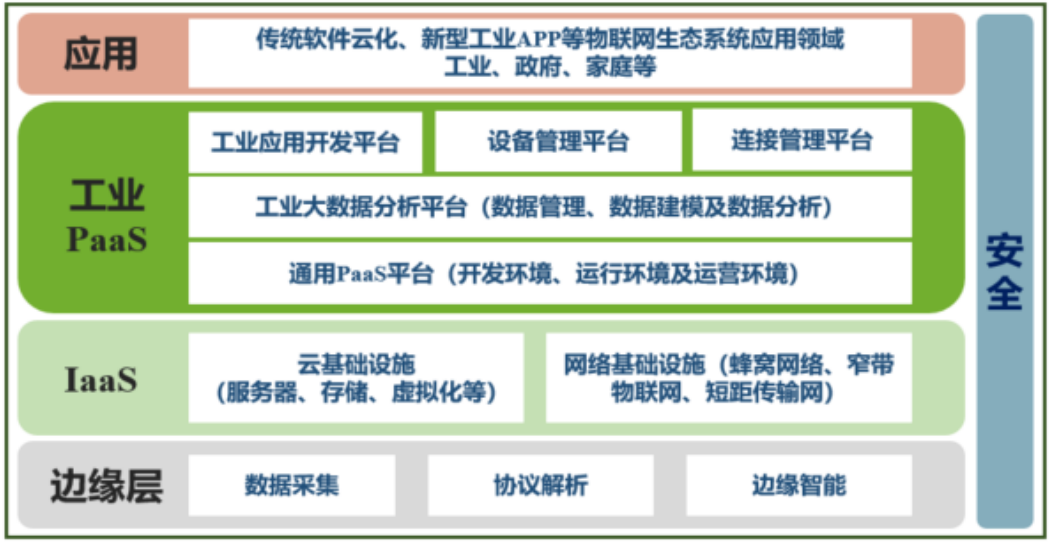
Table 3. Estimates of required investment in seven fields
| Field | Direct investment | Indirect investment |
| 5G | On the basis of the current number of 4G base stations and considering the range of 5G base stations, it is estimated there will be about 5 million 5G base stations in China by 2025. On the basis of the bid placed by China Mobile in a tender for 5G base stations of 500,000 RMB/station, the direct investment for this number of 5G base stations will reach circa 2.5 trillion RMB。 | The 5G industry chain encompasses a wide range of industries, and the 5G base station infrastructure will drive rapid market growth for many types of downstream industries such as Artificial Intelligence, virtual reality, and high-definition video. It is estimated that between now and 2025, the investment related to the 5G industry chain will exceed 5 trillion RMB。 |
| UHV | According to data from the State Grid, there are currently 16 UHV line projects under construction or pending approval, with an estimated total investment of 257.7 billion RMB。The investment cycle for UHV projects is 2-3 years, and total investment is expected to exceed 500 billion RMB between now and 2025。 | By driving growth in the fields of equipment manufacturing, technical services, construction and installation, etc., and by promoting the accelerated development of smart grids such as smart power grids and distribution networks, it is expected that between now and 2025, indirect investments will exceed 1.2 trillion RMB。 |
| Intercity high-speed rail and urban rail transit | According to data from China Railway, by the end of 2019, China's high-speed rail network length was circa 35,000 kilometers. On the basis of an average addition of 5000 kilometers per year, and assuming an investment of 150 million RMB per kilometer, the volume of investment between now and 2025 is expected to be about 4.5 trillion。 | By driving accelerated development of industries such as railroad track and road construction, electrical grids, equipment manufacturing, train cars and components, and by promoting economic development through urban tourism, personal skill development, and people's livelihood, it is expected that between now and 2025, indirect investment will exceed 5.7 trillion RMB。 |
| Electric vehicle charging piles | According to data released by the China Electric Vehicle Charging Infrastructure Promotion Alliance, as of January 2020, a total of 531,000 public charging piles have been installed。On the basis of an annual increase of 150,000 public charging piles and 300,000 private charging piles, and investment costs of public charging piles at 50,000 RMB each and private charging piles at 25,000 RMB each, it is estimated that investment between now and 2025 will reach 90 billion RMB。 | By driving the accelerated development of charging piles/charging station components, by charging business becoming more rationalized, and through increasing number of new energy vehicles, it is expected that between now and 2025, indirect investment will exceed 270 billion RMB。 |
| Big data centers | According to the "National guidelines for the commercial development of data centers", by the end of 2017, China's data centers had a total of 1.66 million racks, at an annual growth rate of 33.4%。Assuming a constant growth rate, 2.2 million racks will be added by 2022, and when assuming a cost of 700,000 RMB per rack, total investment is estimated at 1.5 trillion RMB。 | Big data centers are the infrastructure that are the driving force that will drive the accelerated development of cloud computing and the Industrial Internet of Things, with indirect investment expected to exceed 3.5 trillion RMB between now and 2022。 |
| Artificial Intelligence | According to data by IDC, China's AI chip market in 2019 was worth 12.2 billion RMB。Assuming an average growth rate of 45%, it is estimated that between now and 2025, investment in AI chips will be about 100 billion RMB;Additional investment in machine vision and other sensors, and in cloud platforms/data services/OS driven by AI will exceed 120 billion RMB, with total additional investment in artificial intelligence infrastructure of circa 220 billion RMB。 | The construction of artificial intelligence infrastructure will drive accelerated progress in technologies such as machine vision and natural language processing, etc., and promote the accelerated development of smart healthcare, smart transportation, smart finance and other industries。It is estimated that the core industry for artificial intelligence will exceed 400 billion RMB between now and 2025。 |
| Industrial Internet of Things | According to the "Plan of action for the development of the Industrial Internet of Things" and the "2018 Work plan of the Special Working Group for the Industrial Internet of Things" of the Ministry of Industry and Information Technology, by 2025, a basic network infrastructure for the Industrial Internet of Things covering all regions and all industries will essentially be finalized。On the basis of the size of the Industrial Internet of Things in 2019 of 611 billion RMB, and a compound annual growth rate of 13.3%, it is estimated that the additional investment between now and 2025 will exceed 650 billion RMB[a]。 | Industrial Internet of Things infrastructure will energize traditional industries, allowing transformation and upgrading to smart manufacturing. It is expected that indirect investment between now and 2025 will exceed RMB 1 trillion。 |
Data source:Prepared by CCID Think tank, March 2020
[a]: This is a fairly literal translation of the original text. Other analyses (link) mention the numbers of 611 billion RMB in 2019, and a CAGR of 13% as referring to market volume. That would make a market volume of 1272 billion RMB in 2025, and 5746 bln RMB over the period 2020 to 2025. The value of 650 billion RMB refers to investment required to realize this market volume [note added by China Energy Portal].
六、“新基建”引入的投资新风口
(一)加快芯片产业化
一是5G芯片,超500万基站建设需求带来5G基站芯片与高频器件的庞大市场需求。二是人工智能芯片,随着人工智能赋能千行百业发展,GPU、TPU、NPU等人工智能芯片市场蓝海广阔。三是服务器芯片,5G、物联网、工业互联网等海量数据应用势必带来高速服务器需求的持续快速增长。四是物联网专用芯片,物联网的连接设备构成种类多样,针对智能硬件、智能家电和智能计量等不同应用场景的物联网专用芯片市场需求广阔。五是IGBT控制芯片,IGBT是实现新能源汽车、高铁轨交应用功率转换与变频控制的关键,市场需求与发展潜力巨大。
(二)补足工业软件短板
一是研发设计,计算机辅助设计(CAD)、计算机辅助工程(CAE)、产品数据管理(PDM)工业设计类软件主要用于提升企业在产品设计与研发工作领域的能力和效率。二是生产制造,制造执行系统(MES)、数据采集与监视控制系统(SCADA)等工业生产制造类软件是提高智能制造过程的管控水平、改善生产设备的效率和利用率的关键。三是工业控制,运行自动控制系统(ATCS)等工业控制软件主要用于高铁、轨交等控制、监视或者设备系统的智能运营。
(三)推进系统装备规模化生产
一是5G基站设备,为满足人口密集场所稳定、有效覆盖,未来5G基站需求数量庞大;二是服务器,受5G、人工智能、工业互联网等海量数据业务驱动,服务器市场规模将保持快速增长;三是工业数控装备,高铁列车装备制造、特高压装备制造对数控装备要求较高。
(四)促进行业应用落地
一是智慧医疗,加快推进基于5G新型网络架构的智慧医疗体系建设及模式创新,促进5G在疫情预警、院前急救、远程实时会诊、远程手术、无线监护、移动查房等环节的应用推广,以有效应对重大公共卫生突发事件;二是智慧教育,融合5G、AI、大数据、超高清视频等技术,探索远程教育、智慧课堂/教室、校园安全等场景,推广5G+高清远程互动教学、沉浸式教学、远程督导、智能安防监控等应用;三是智慧交通,加快开展基于5G的车路协同车联网大规模验证与应用,提高车路协同平台的功能和交互能力,以促进城际高铁和轨道交通、新能源汽车等智能化、信息化发展。四是智能制造,加快搭建基于5G网络的工业协同制造平台,推动5G技术与工业网络、工业软件、控制系统融合,促进制造业数字化、网络化、智能化转型升级。。
七、需着重关注的四点问题
(一)投资主体
以社会资本投资为主,发挥政府财政资金引导和补空缺作用,避免政府大规模投资,调动社会资本投资积极性,最大化发挥投资带动作用。
(二)实施进度
根据战略规划和市场应用需求,统筹规划好新基建长期发展路线图和年度投资计划,防止“一哄而上”和重复建设,避免短期投资泡沫。
(三)区域和行业布局
以需求为导向,不搞大水漫灌,面向重点区域和重点行业,率先推进新基建试点示范应用,确保新基建投资效益的发挥。
(四)网络安全保障
按照《网络安全法》《密码法》等规章制度要求,同步规划和制定数字新基建安全技术保障措施,完善面向数字新基建安全测评、风险评估、安全审计、保密审查、日常监测等制度。
八、区域布局需考虑的因素
为防范“新基建”项目“蜂拥而上”和重复建设,研究新基建区域布局应考虑何种因素,从而能够与区域综合发展相协调,是十分有必要的。
(一)国家战略和重大项目布局要求
区域新基建布局应处理好地方建设目标与国家经济社会目标间的关系,立足更好地服务“一带一路”建设、京津冀协同发展、长江经济带发展、长三角一体化、粤港澳大湾区建设等国家战略。
(二)人口分布和城镇化格局现状
从人口流动看,城镇化的人口将更多聚集到城市群、都市圈,必将对区域新基建提出更高要求。5G基建、高铁轨交、新能源设施等应重点将人口流动关系和城镇化潜力纳入空间布局考虑范围。
(三)地区产业和互联网发展情况
良好的制造业集聚、制造业和互联网融合发展基础是新基建项目建设的底座,区域布局可重点考虑产业和互联网基础稳固的地区,如工业互联网以推动产业集聚区的行业整体上云为抓手开展建设。
(四)区域资源环境承载能力
数据基础设施方面,随着5G商用推进,“西数东送”的愿景有望实现,届时大量数据中心可考虑建在气候优势明显、能源价格较低的中西部地区。特高压建设方面,应充分考虑各地可再生能源资源和消纳条件,向受端负荷中心进行点对点区域布局。
九、措施建议
(一)政府层面
加强统筹规划和顶层设计。一是制定新基建发展中长期战略规划和短期行动计划。二是根据区域特点和行业需求,统筹规划新基建区域和行业布局。三是谋划好各类新基建投资参与主体,调动社会资本参与积极性,最大限度发挥投资带动作用。
完善财税金融政策扶持。一是加大基于新基建创新应用的财政资金扶持力度,扩大扶持项目范围,增加项目扶持资金额度。二是实施更大力度的投资税抵免、研发费用加计扣除、高新技术企业低税率等政策。三是在新基建企业融资、贷款、并购、重组、上市、发债等方面出台更加优惠金融税收等政策。
强化产业政策引导。一是放开数字新基建市场准入,取消不合理的投资者资格要求,扩大民营企业参与投资建设的渠道。二是加快出台新基建建设、运营和管理的标准规范、管理办法、法律法规等等。三是加强对新基建的安全监管,确保网络安全、平台安全和数据安全。
鼓励支持创新示范应用。一是从中央、省、市三个层面开展基于数字新基建的创新应用试点示范项目遴选。二是采取“云服务券”等经验模式,支持企业加大数字新基建应用力度和基于数字新基建创新创业活动。三是举办基于数字新基建的行业应用创新大赛,强化投资对接能力,提高大赛成果转化率。
(二)企业层面以顶层设计谋划新方向。企业应以超前意识谋划新基建相关领域发展机遇,在把握和衔接相关领域发展趋势、需求和自身业务模式基础上,科学制定五年发展规划、三年行动计划和年度工作方案,明确企业战略发展方向和目标定位。
以试点示范推进新发展。有基础、有需求、有动力的企业应聚焦新基建涉及重点领域需求,积极申报应用试点,打造一批性能优秀、应用效果好的基于5G、人工智能、工业互联网的应用案例和行业解决方案,拓展新模式、新服务。
以区域共建实现新突破。企业应探索与地方政府共建新模式,通过PPP、BOT、BT、特许经营权等多种合作方式,聚力打造算力基础设施、超高清制播系统等新型基础设施,形成一批政府与企业合作共建的可复制、可推广的实践案例。

